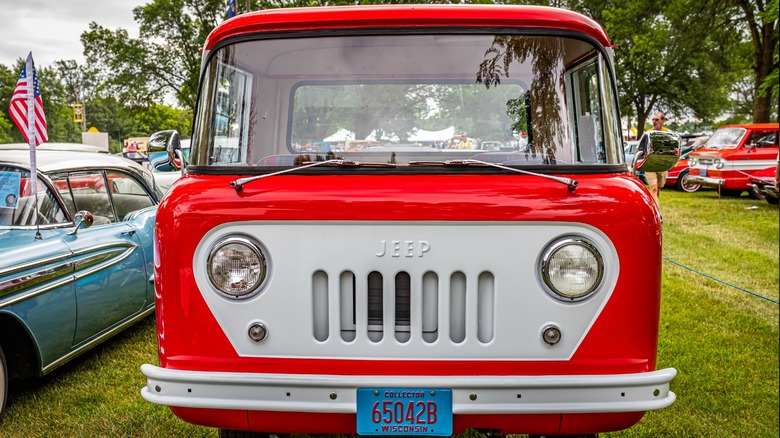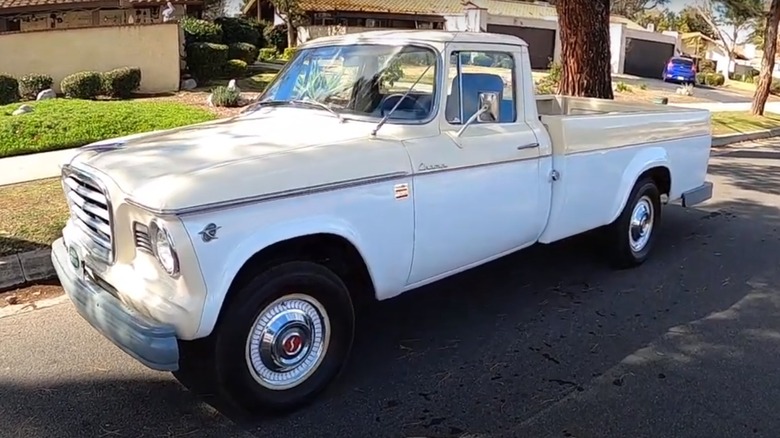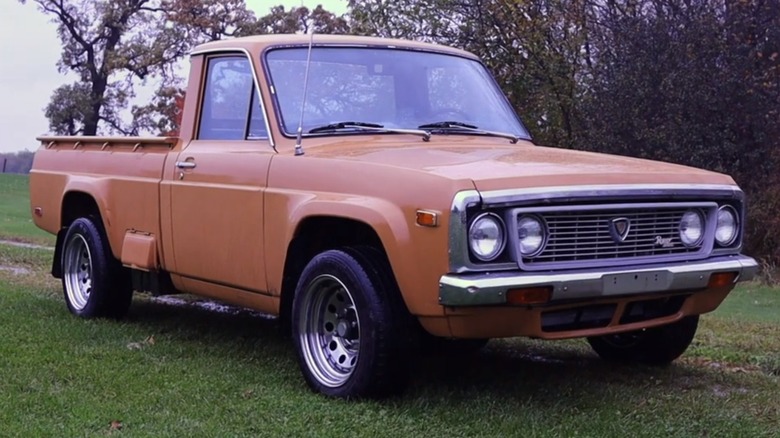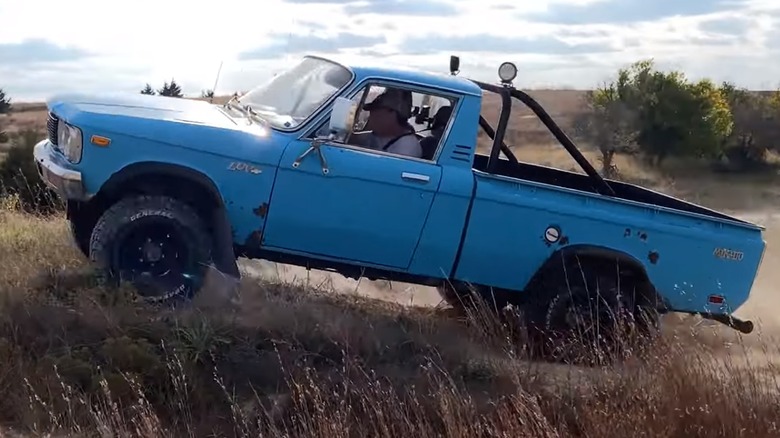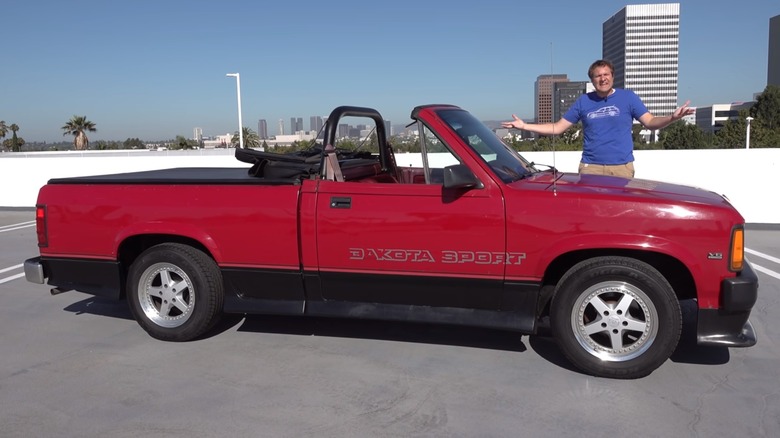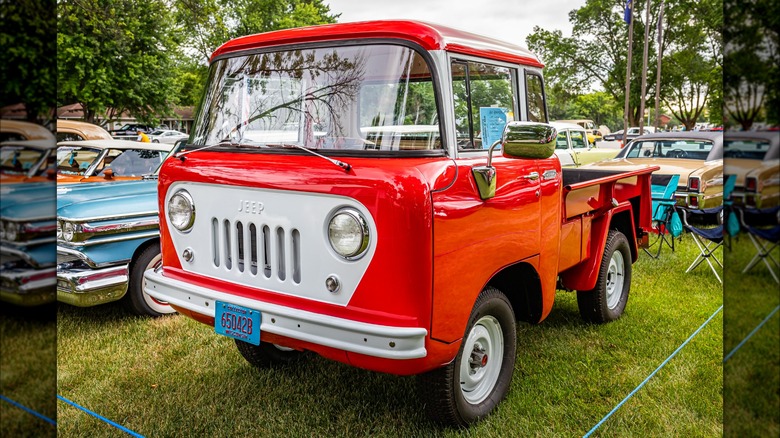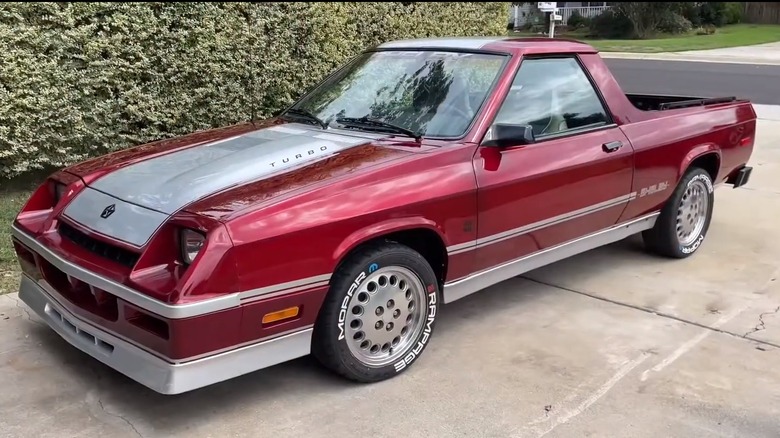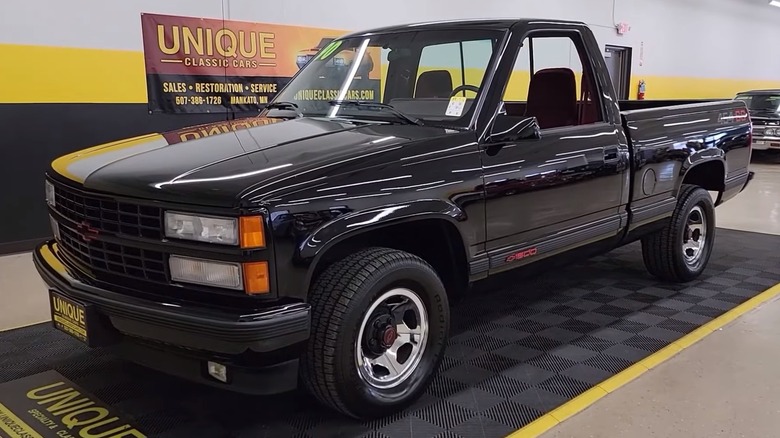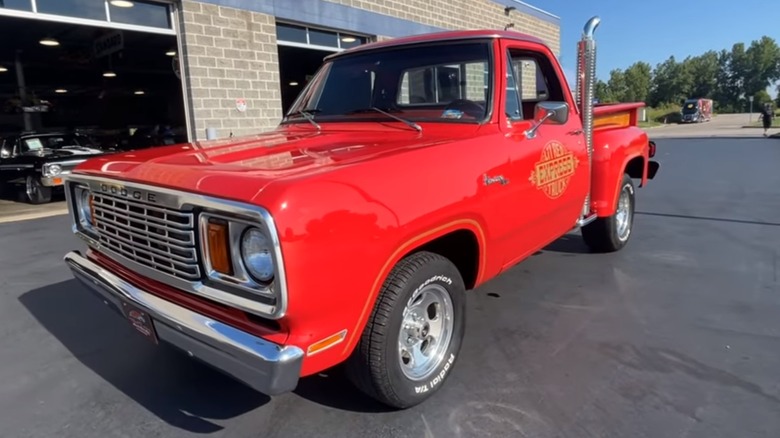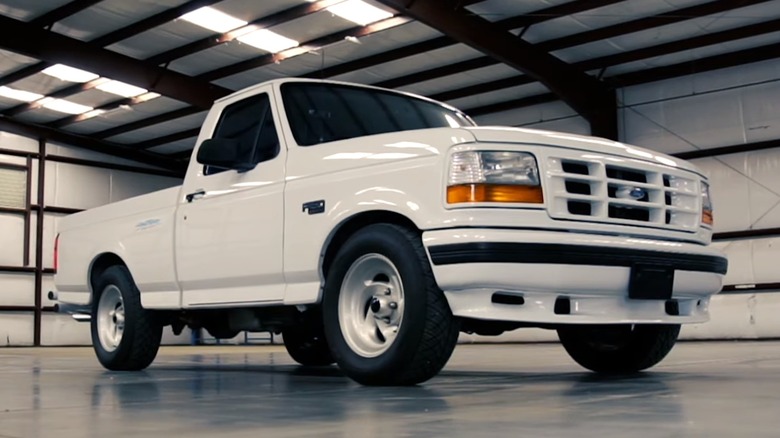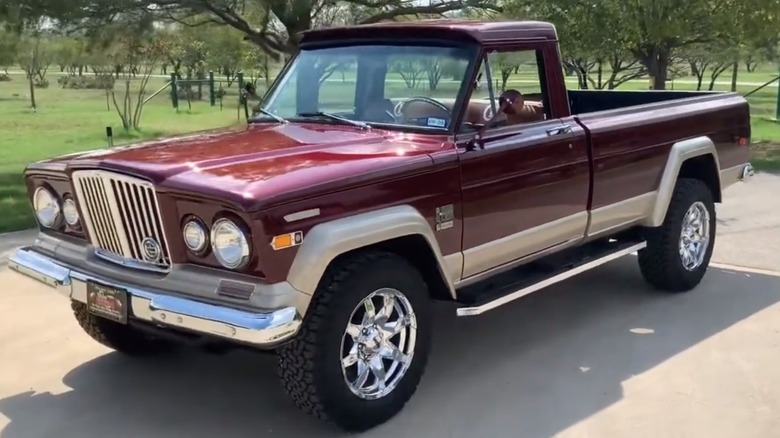10 Rare Vintage Pickup Trucks Still Worth Purchasing Today (If You Can Find Them)
The endless utility provided by a pickup truck almost cannot be measured, even if most new truck owners only ever use theirs for commuting. Even the concept of the truck came from the days of the horse and wagon when people used open flat-bottomed wagons to move products and raw materials to the factory, job site, or retail establishment. Once engines were affixed with wheels, creating trucks seemed only natural.
While modern trucks continue to be used for all work, many of them are now luxurious status symbols featuring lavish interiors of leather and power accessories the likes of those who came before us could never imagine. They drove honest pickups, bare and rugged to do work and work alone. Some of those trucks remain somewhat plentiful, and restoring classic trucks is a healthy business. However, other truck models from less successful automakers or specific models made as special editions can be quite rare.
Some vintage trucks became scarce years ago from the use and abuse they suffered until they no longer served a purpose and went to the auto recycler to be picked apart until nothing but the cold steel bones of a once-rugged machine remained. Sometimes you come across a vintage truck in scarce supply, and how fondly it is collectively remembered often dictates its value today.
Regardless, here are 10 trucks that are still worth purchasing if you are lucky enough to find one.
Studebaker Champ
Long before the Big Three Automakers in Detroit ruled that city, a South Bend, Indiana company was a major manufacturer of personal transportation in the United States. Studebaker was well-known for making among the finest carriages and wagons through the second half of the 19th Century — even Abraham Lincoln rode in a Studebaker to the Ford's Theater before being assassinated. Studebaker later built automobiles for a half-century, including pickup trucks.
Introduced in 1959, the Studebaker Lark was a new compact model for the company. It was meant to help a struggling company that had been suffering various maladies for years. The next year would see the first Studebaker Champ pickup based on the compact Lark. Not only did it share the chassis, but the truck and car were indistinguishable from the B-pillar forward. Engine options were an old flathead straight-6 or Studebaker OHV V8 with up to 210 horsepower. Stepside models were offered that gave the truck a classic 1940s look, but those with traditional beds looked a bit off, as the beds were wider than the cab as if they had come from a different truck altogether. Studebaker used the Dodge Sweptline pickup bed and renamed it the Spaceside bed.
By 1960, the company was in its death throes and hemorrhaging cash. Production ended in 1963 for almost all models, and Studebaker effectively ceased to exist. Only about 25,000 Champs sold, making them a rarity today. Being oddball small trucks, they remain relatively affordable on the classic car market.
Mazda REPU
From its beginnings selling in the North American market, Mazda has been a bit of a small player, acting like more of a plucky young upstart with something to prove. Evidence of this is seen in Mazda's dedication to the engine while others abandoned it. Mazda produced rotary engines until it discontinued the RX-8 in 2012. The company even installed it into a small pickup in 1974 and called it the Mazda REPU, meaning Rotary Engine Pick-Up.
The Mazda REPU was built specifically for the North American market, and that was the only place it was sold. The truck was the same basic B-series Mazda truck also imported as the Ford Courier, but it also came with flared fenders, which gave it a wider and more aggressive appearance, and quad circular taillights under the tailgate. An important fact about rotary engines is that they have few moving parts allowing them to spin to high rpm, which is where they make the most power. The trade-off is a lack of torque output and poor fuel economy. Having an engine in a vehicle that required extra torque to haul a load does not make much sense, and neither did the REPU.
Poor fuel economy was primarily behind its undoing. Sales only lasted four years, and Mazda saved the Rotary for sports cars only after that. You can still find them occasionally today but it could take a while if you set out to find one, but they make excellent candidates for wicked RX-7 and RX-8 engine swaps.
Chevrolet LUV
As Japanese manufacturers began to get a foothold in the American market, cute little mini trucks started showing up in dealers and early adopters found them to be rugged and dependable little workhorses. Seeing an opportunity to fill a niche it was not yet serving, Chevrolet turned to its Japanese partner Isuzu to strike a deal to import its small truck for sale as a Chevrolet. It was known as a Light Utility Vehicle, or LUV.
The little truck came along at just the right time in 1972 as the very next year the Arab Oil Embargo commenced and fuel prices shot up, causing shortages and long lines at the pump. Chevrolet was well-positioned to sell its new 32-mpg-import, and sell them it did — 39,422 in 1973. Chevrolet avoided the 25% tariff known as the "chicken tax" by sending them partially assembled and completing them at the port. Sales continued through a second generation in 1981, which adopted fewer curves and less adornment as was the style of the era. A diesel option was added offering owners nearly 50 mpg and endless reliability, if not much power.
Half a million LUVs were sold all in, and its success prompted the homegrown creation of the S-10. Chevrolet LUV pickups were small but indestructible little trucks that punched well above their weight, and that is why they can be hard to find today. Owners used them for work and ran them into the ground long before they could be called a "classic." Prices today are reasonable but on the rise.
Dodge Dakota Sport convertible
When Dodge introduced the 1987 Dakota pickup, it created an all-new vehicle segment. Larger than the imported trucks from Japan but smaller than traditional American full-size trucks, the Dakota arrived in a category of one, the mid-size truck. The Dakota provided the perfect "Goldilocks" option against big American trucks and cramped imports, and it came with available V8 power. Sales did not immediately impress, but the public eventually warmed up to the truck enough to make it a success.
Already having a new truck that broke molds and created something new upon introduction, Dodge shook things up with the 1989 Dakota Sport model. It was then and probably still is the only truck ever offered as a convertible. Dodge contracted with American Sunroof Corporation, known for building such iconic special edition cars as the Buick Grand National GNX and ASC/McLaren Mustang, to chop up Dakota single cab pickups and do what they did best: install a soft top.
Fitted with a roll bar rising from the front of the bed, the top could be rolled back to create a true open-top experience in a pickup. A 3.9-liter V6 came standard along with special stripes along the rocker panels and Dakot Sport lettering on the doors. It was a cool concept that, on its face, seemed desirable. Alas, it was not and the option was pulled after just three years. Only four sold on Bring a Trailer in the past two years, but at least they were cheap at just over $10,000 each.
Jeep FC
Today Jeep is a division of the Stellantis automotive giant. Before that, it was a part of American Motors, and before AMC built them, the original manufacturer of the WWII light Army transport vehicle, Willys, did. After the war, Willys went immediately into converting its Army transport into a civilian version, leading to the Jeep of the modern day. Willys built a few additional models during its run, one of which is known as the Jeep FC.
FC stands for Forward Control, which describes the placement of the vehicle controls, i.e. the steering wheels and pedals. It was built much like cab-over big rigs or those school buses with the engines in the rear. However, the engine of the FC was up front below the occupants. Built on the same chassis as the Jeep CJ5, the FC provided ample hauling capability with an extremely tight turning radius, making it capable of doing the work of larger trucks in far less space. Willys managed to attain successful sales of it for eight years, with a total of about 30,000 units produced. Even after Willys dropped it in 1965, licensed copies continued to be built in India by Mahindra and in Spain by VIASA.
Engine options were the Hurrican F-head four-cylinder, or an L-head six-cylinder, and could be adapted into a variety of roles, including military duty. With such limited production, they are hard to come by today and they can cost you a bundle.
Dodge Rampage/Plymouth Scamp
The Dodge Omni and Plymouth Horizon hatchback twins won awards upon introduction in 1978 and were the first European-style hatchback from an American automaker. They proved to be a successful part of the Chrysler turnaround of the era, leading to the development of a broader range of vehicles, including trucks. Specifically, trucks created from the Omni/Horizon.
In 1982, Chrysler introduced a new light truck known as the Dodge Rampage and Plymouth Scamp. From the cab forward, these were identical to the Omni/Horizon, featuring the same transversely-mounted four-cylinder engines driving the front wheels only. Using a front-wheel-drive car made it extraordinarily easy to create these trucks as engineers and designers only had to change a bit of sheet metal and a hatchback became a truck. Although they would not carry much of a payload, they were perfect for light deliveries around town or for homeowners to grab some lumber for small projects. With only 84 horsepower from a 2.2-liter engine, speed was not much of a concern, especially with the optional three-speed automatic.
These trucks only lasted three years. Sales were lackluster, and Rampage production in 1983 barely topped 8,000 units. A few of them were treated by Carroll Shelby in Skunkworks fashion that was only sold in California, making the California Shelby Rampage the rarest and most desirable of all. Finding any of these trucks today is difficult, with the Shelby examples being next to impossible. Fortunately, those non-Shelby models that do come up for sale remain good bargains today.
Chevrolet 1500 454 SS
There was a time when pickup trucks were sold for people who needed tough vehicles to get work done. They were not yet status symbols and the idea of a sports truck, except for the El Camino SS396, was almost laughable, that is, until Chevrolet stepped in with its 1500 454 SS.
From 1990 to 1993, Chevrolet offered this half-ton pickup in a single-cab model with a short bed completely devoid of chrome and everything on the exterior either blacked out or color-matched. Besides giving this truck a more sporting exterior and special chrome-dipped wheels, Chevrolet plugged its biggest engine available, a 7.4-liter 454 V8, under the hood and slapped some SS decals on it. For the first two years, Onyx Black was the only color choice. Inside, they received Silverado upscale treatment offering plush bucket seats with a huge center console, premium audio system, cruise control, and other contemporary conveniences.
Power from the throttle-body style fuel-injected V8 was rated for just 230 horsepower. It was bumped to 255 in 1991, but all that displacement provided a generous 380 lb-ft of torque, meaning this truck could jump off the line if it could ever get any traction. With the 454 SS, Chevrolet introduced the idea of a performance pickup and spawned many successors from everyone else in Detroit. The 454 SS was reasonably priced in 1990 at $18,295 ($36,450 today), but production was limited, and values today have skyrocketed, with recent sales clearing $100,000.
Dodge Lil' Red Express Truck
While the Chevrolet 454 SS is often credited as the first sports truck, its inspiration may have come from a Dodge model in the 1970s called the Dodge Lil' Red Express Truck.
This special edition Dodge D150 Adventurer pickup went on sale in 1978, introducing a new concept to the market: a factory-built custom truck. It came with a Utiline step-side cargo bed and was painted in bold red paint. The bed received faux wood panel accents on the side and tailgate, and steel slotted wheels, with wider ones in the rear, received a chrome dip. Perhaps most absurdly, the exhaust was routed up behind the cab into a pair of big rig-style smokestacks. If the smokestacks were not enough to instantly point this truck out in a crowd, the doors and tailgate received sizable and elaborate decals with "Lil' Red Express Truck" in old-timey lettering and flourishes. There was no mistaking this truck.
Although performance was down on everything from the era, emissions laws remained lax for trucks, allowing Dodge to insert a 360 V8 from its police package delivering 225 horsepower with 295 lb-ft of torque. This was as good as it got for the era, and buyers were probably to have any amount of power they could get. Demand quickly outpaced supply, and Dodge struggled to keep up with orders. The single-year model was extended into 1979, and a total of about 7,000 trucks were built, making them now rare and valuable, with most of the seven current listings on AutoTrader exceeding $30,000.
Ford F-150 SVT Lightning (First Generation)
Chevy kicked off the era of the sport truck in 1990 with the 454 SS, so Ford had to respond in kind with its own special pickup. It took until 1993 for one to be released, but when the Ford F-150 SVT Lightning hit dealer lots, Ford had a hit on its hands. Ford introduced its new truck in 1992 for the 1993 model year, and it paved the way for more recent power trucks like the Ford Raptor and new electric Ford Lightning.
Created by Special Vehicle Teams, which was Ford's performance division also responsible for the resurgent Cobra of the '90s, put together the Lightning on a single-cab short-bed standard F-150 with a 5.7-liter Windsor V8 under the hood. It was then treated to solid black, red, or white paint, with all trim and accessories color-matched, ditching the chrome. The Lightning was also not done just for show. The V8 engine under the hood produced 240 horsepower and 315 lb-ft of torque, representing a boost of power by 12% and torque by 5% over the standard F-150 model. SVT did this using cast iron heads with larger valves, a tuned intake manifold, exhaust headers flowing into dual pipes, and other performance tweaks.
Cloth bucket seats with Lightning embroidered onto the headrest and custom alloy wheels make it known this is a special truck. 1995 was the last year, and Ford built 11,563 in all. Surprisingly, recent sales of these trucks on Bring a Trailer mostly remain under 30,000, despite the limited production.
Jeep Gladiator
When Jeep introduced in 1963 its now-legendary Wagoneer, a medium-duty pickup version came alongside it called the Gladiator, also the J-Series. The Gladiator is a spartan but well-prepared for all terrains and also just looks big, mancing, and endlessly cool. The only engine at first was a 230 cubic inch Tornado straight-six, the only overhead-cam six made in the U.S. at the time, from Kaiser, Jeep's parent company, and not until 1965 could buyers opt for the 250-horsepower Vigilante 327 cubic inch V8. More importantly, Jeep trucks offered go-anywhere capability thanks to their proven four-wheel-drive (4WD) systems.
In addition to being 4WD, Gladiators also received independent front suspension, a rarity for 4WD vehicles of the time, which primarily used solid front axles. The ability to tackle any terrain while carrying heavy payloads led the J-Series trucks to being adopted by the U.S. Military. Also finding work with the government agencies that worked in the American wilderness, the trucks proved to be popular among many users. The general public was less enamored plus Kaiser management had been poor, leading to the AMC takeover by 1970.
The Gladiator name was retired in 1971, replaced simply by J200 and J4000, only to be replaced again with J10 and J20 soon after. Annual sales reached 59,180 by 1964, but that number likely dipped in later years and still pales in comparison to Ford's 178,581 of the F-100 Styleside alone, not including Flaresides or F-250s. Today they are semi-rare with prices ranging wildly, mostly due to similarly wide-ranging conditions.
